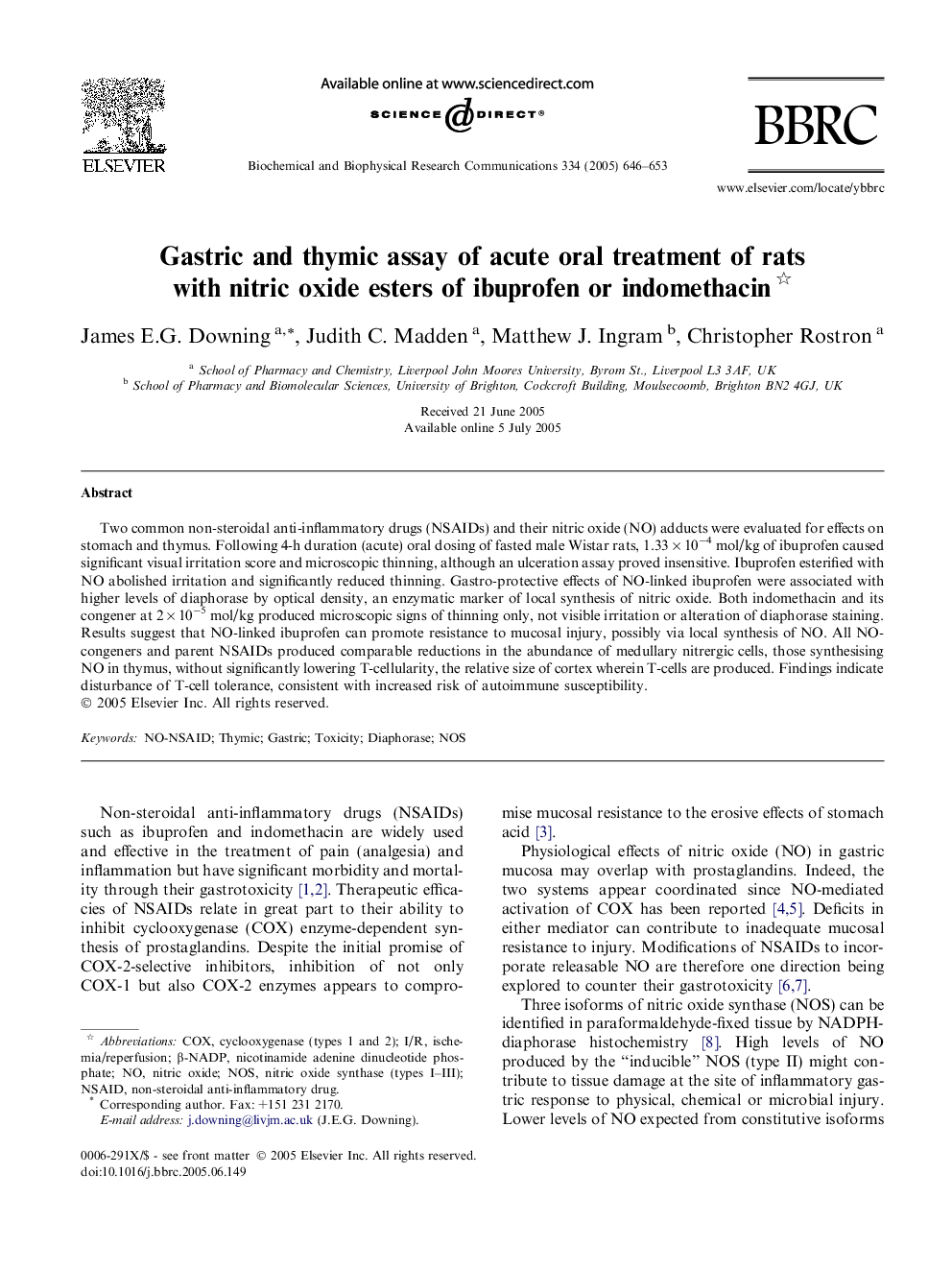| Article ID | Journal | Published Year | Pages | File Type |
|---|---|---|---|---|
| 10769256 | Biochemical and Biophysical Research Communications | 2005 | 8 Pages |
Abstract
Two common non-steroidal anti-inflammatory drugs (NSAIDs) and their nitric oxide (NO) adducts were evaluated for effects on stomach and thymus. Following 4-h duration (acute) oral dosing of fasted male Wistar rats, 1.33Â ÃÂ 10â4Â mol/kg of ibuprofen caused significant visual irritation score and microscopic thinning, although an ulceration assay proved insensitive. Ibuprofen esterified with NO abolished irritation and significantly reduced thinning. Gastro-protective effects of NO-linked ibuprofen were associated with higher levels of diaphorase by optical density, an enzymatic marker of local synthesis of nitric oxide. Both indomethacin and its congener at 2Â ÃÂ 10â5Â mol/kg produced microscopic signs of thinning only, not visible irritation or alteration of diaphorase staining. Results suggest that NO-linked ibuprofen can promote resistance to mucosal injury, possibly via local synthesis of NO. All NO-congeners and parent NSAIDs produced comparable reductions in the abundance of medullary nitrergic cells, those synthesising NO in thymus, without significantly lowering T-cellularity, the relative size of cortex wherein T-cells are produced. Findings indicate disturbance of T-cell tolerance, consistent with increased risk of autoimmune susceptibility.
Related Topics
Life Sciences
Biochemistry, Genetics and Molecular Biology
Biochemistry
Authors
James E.G. Downing, Judith C. Madden, Matthew J. Ingram, Christopher Rostron,
